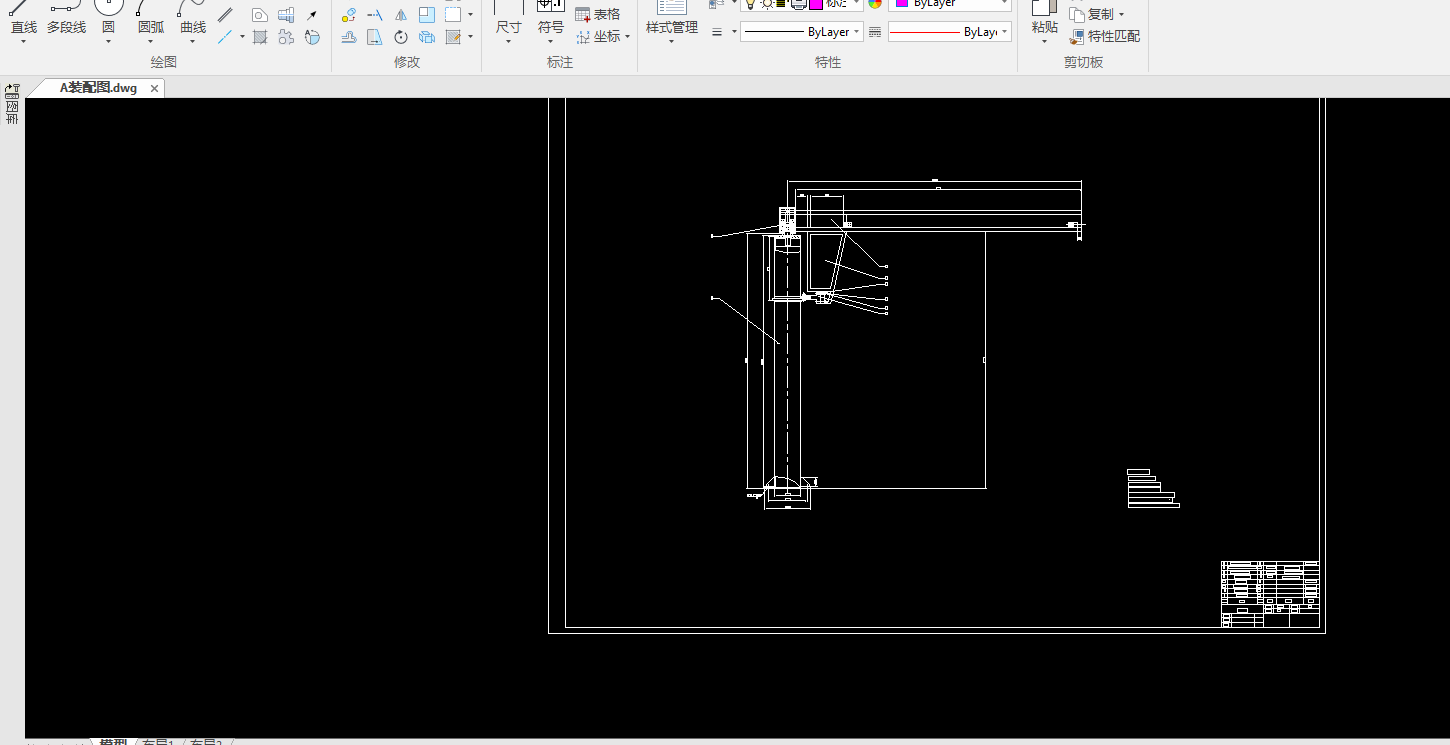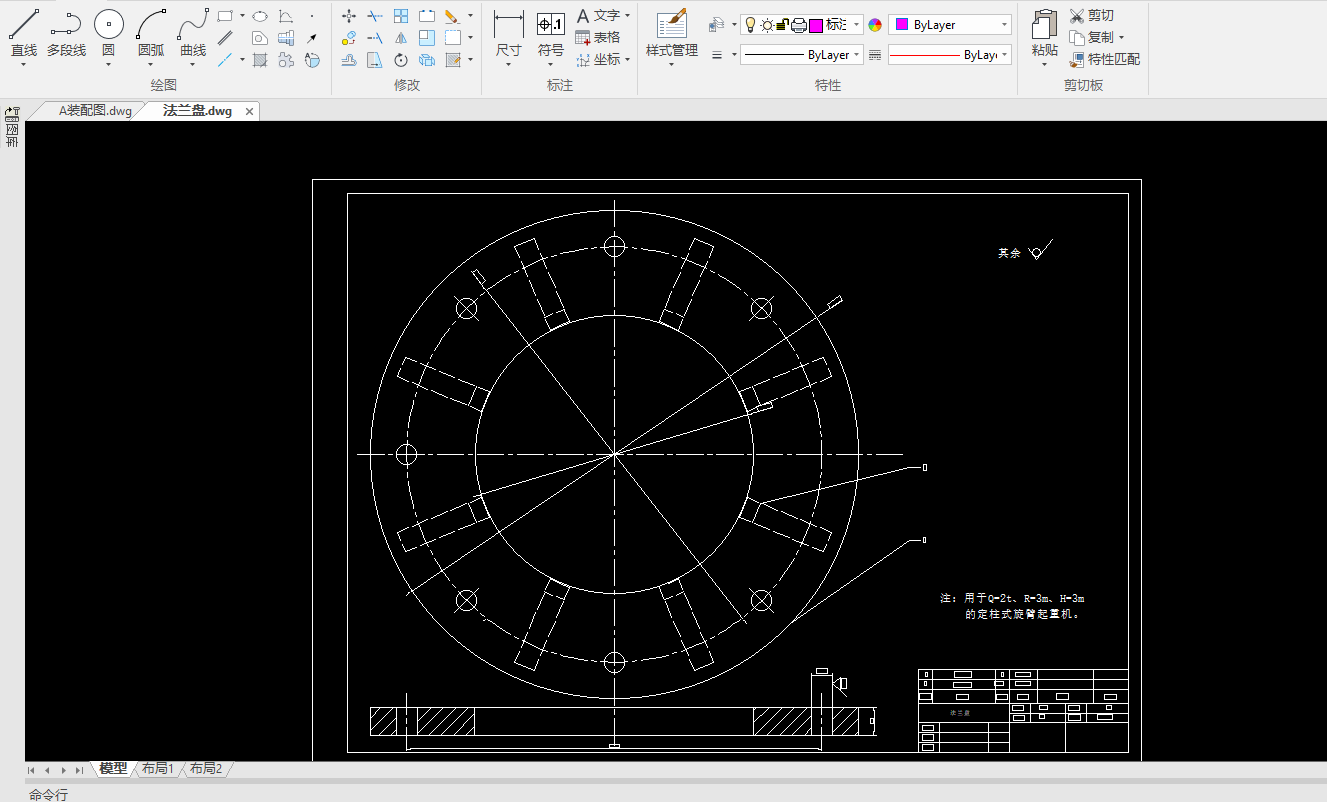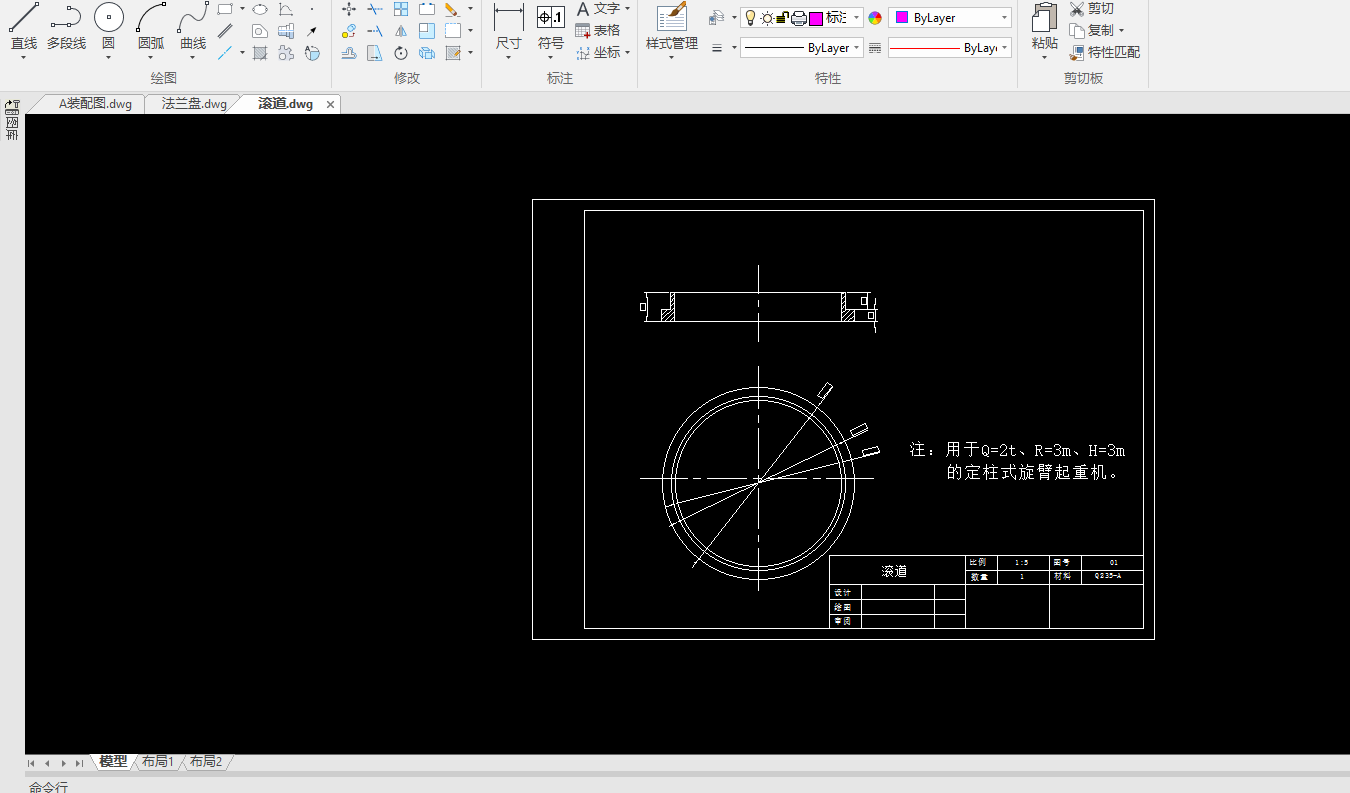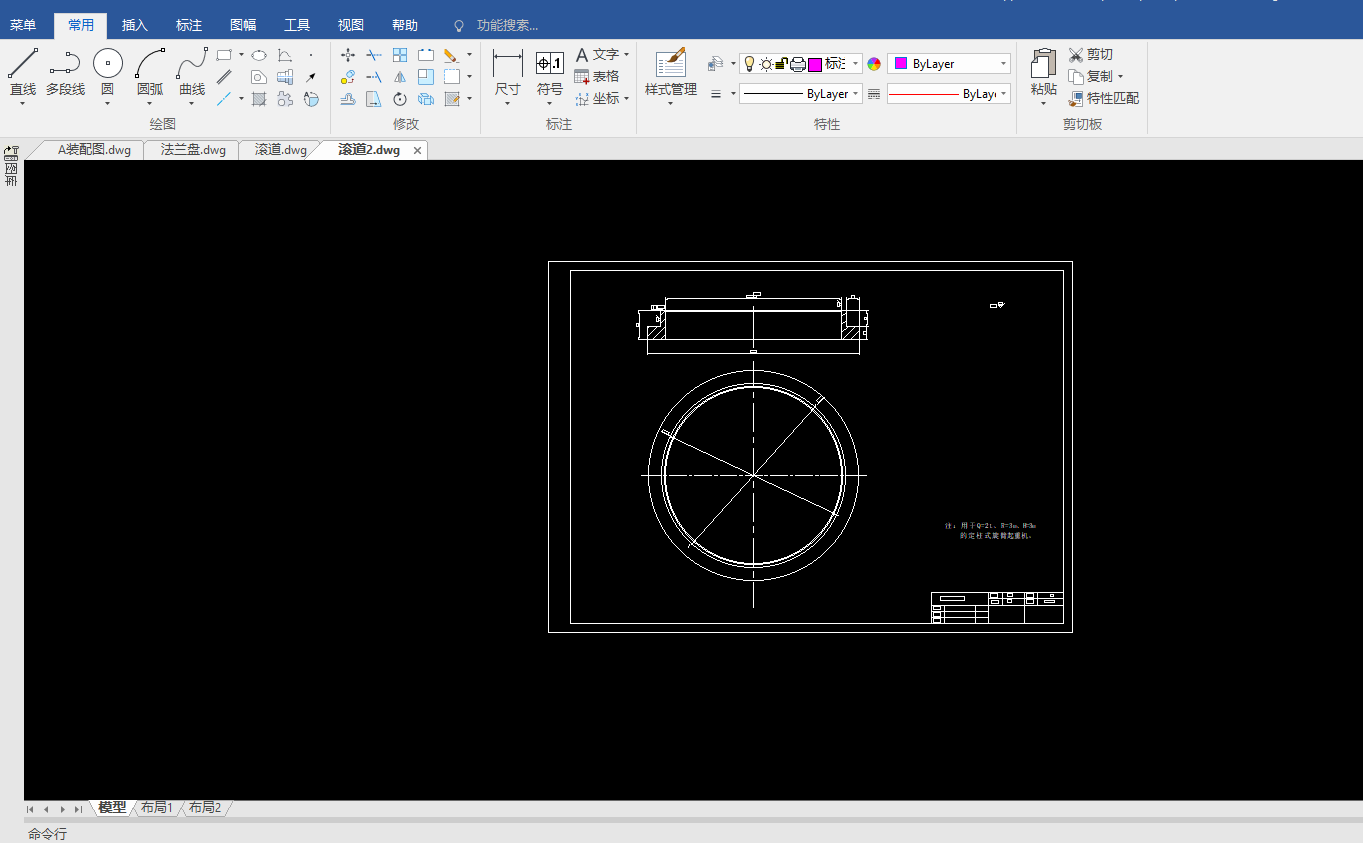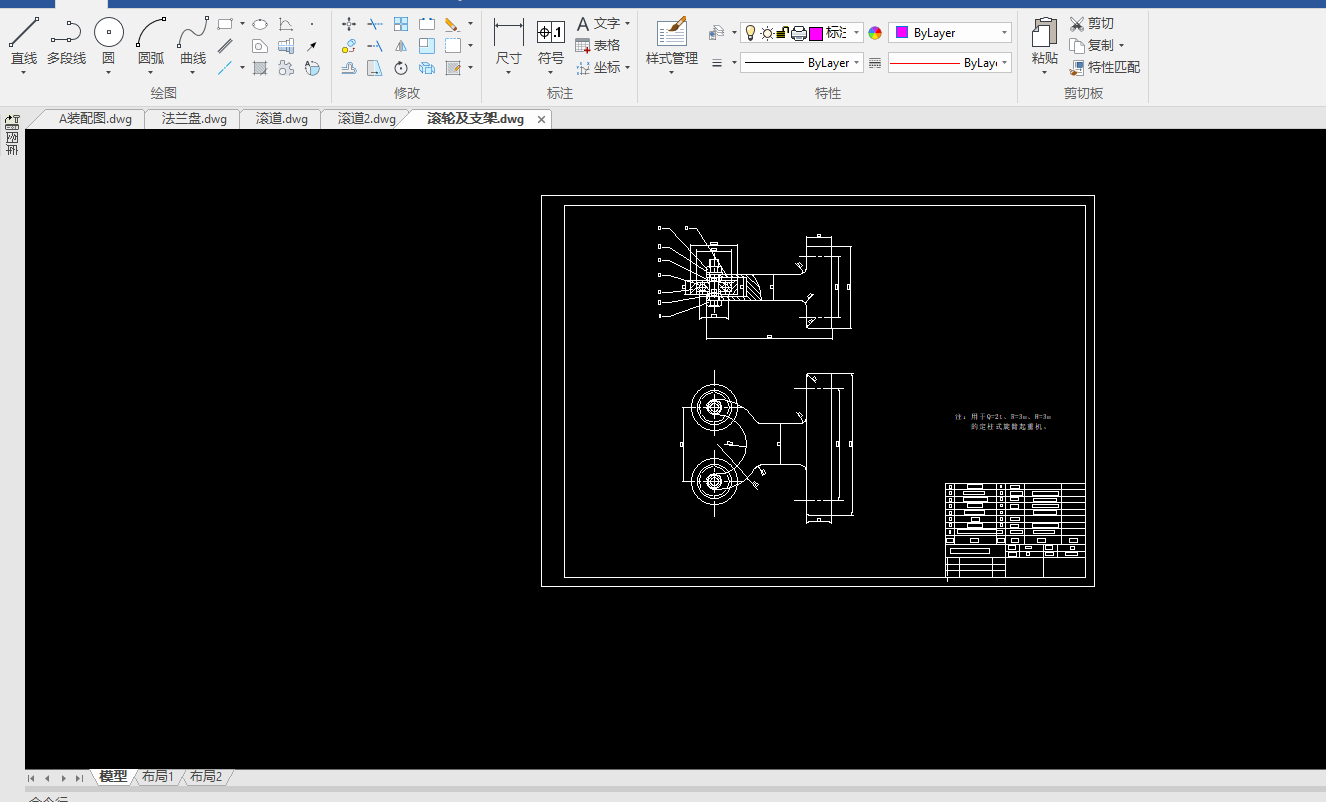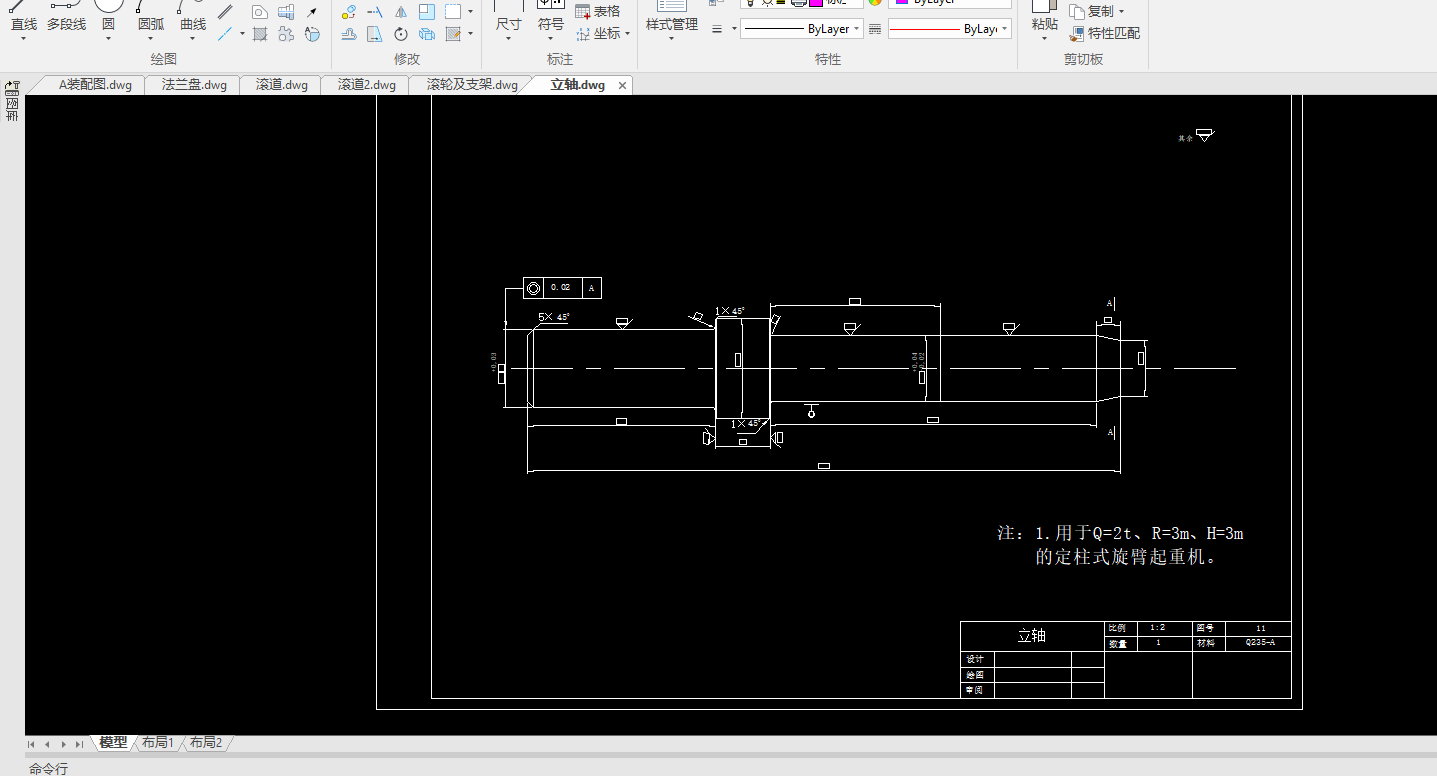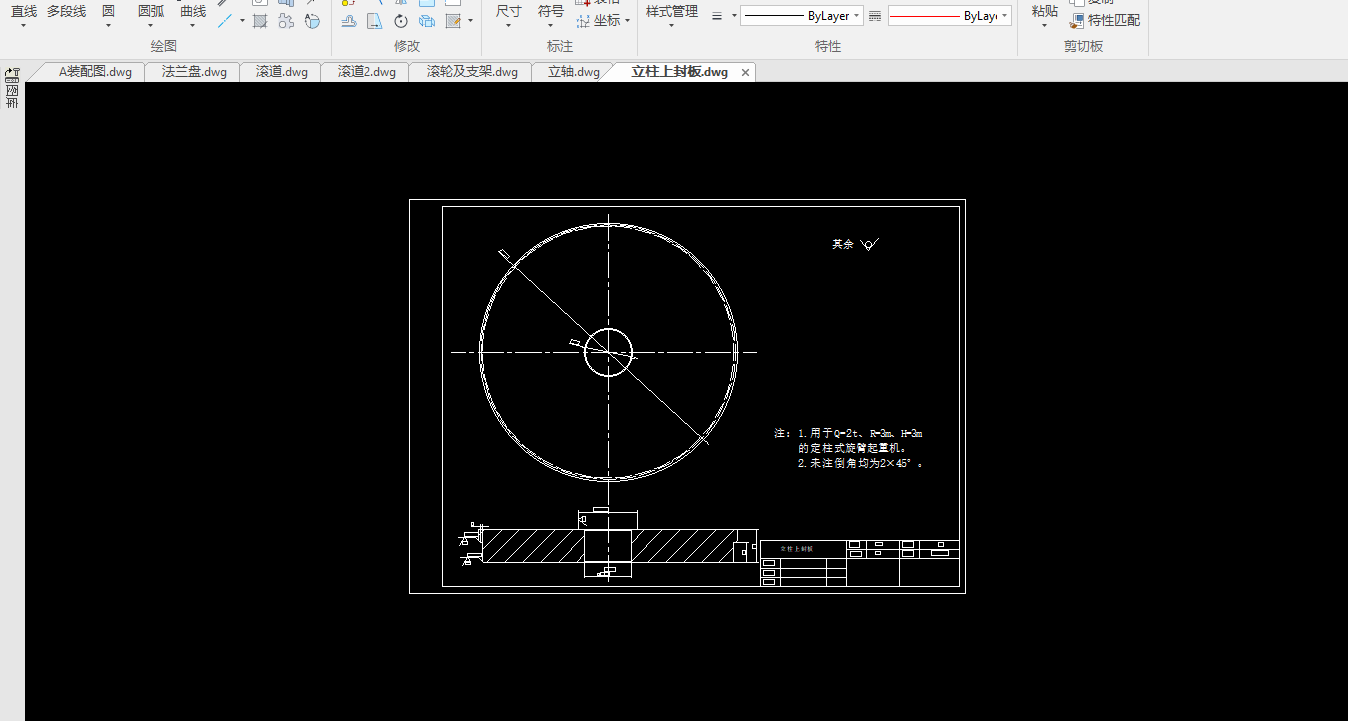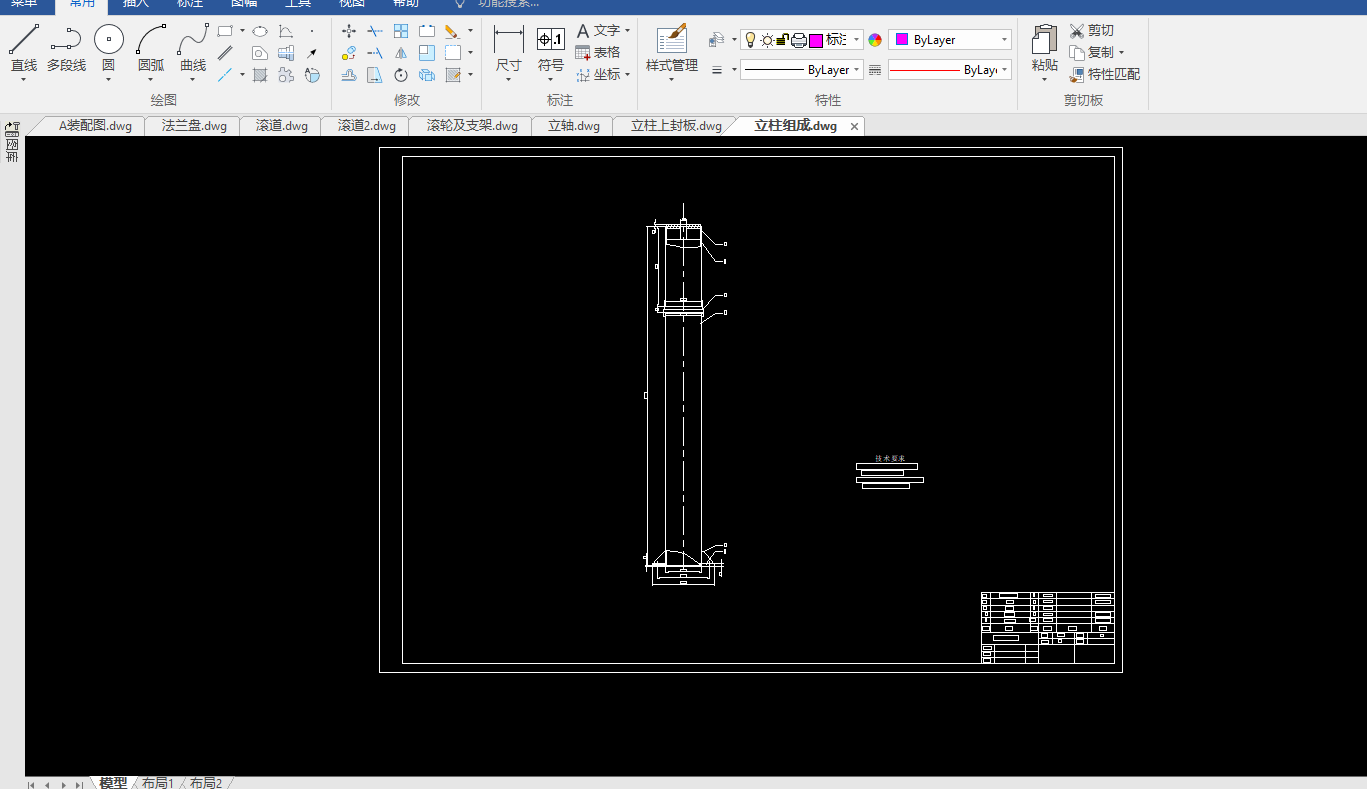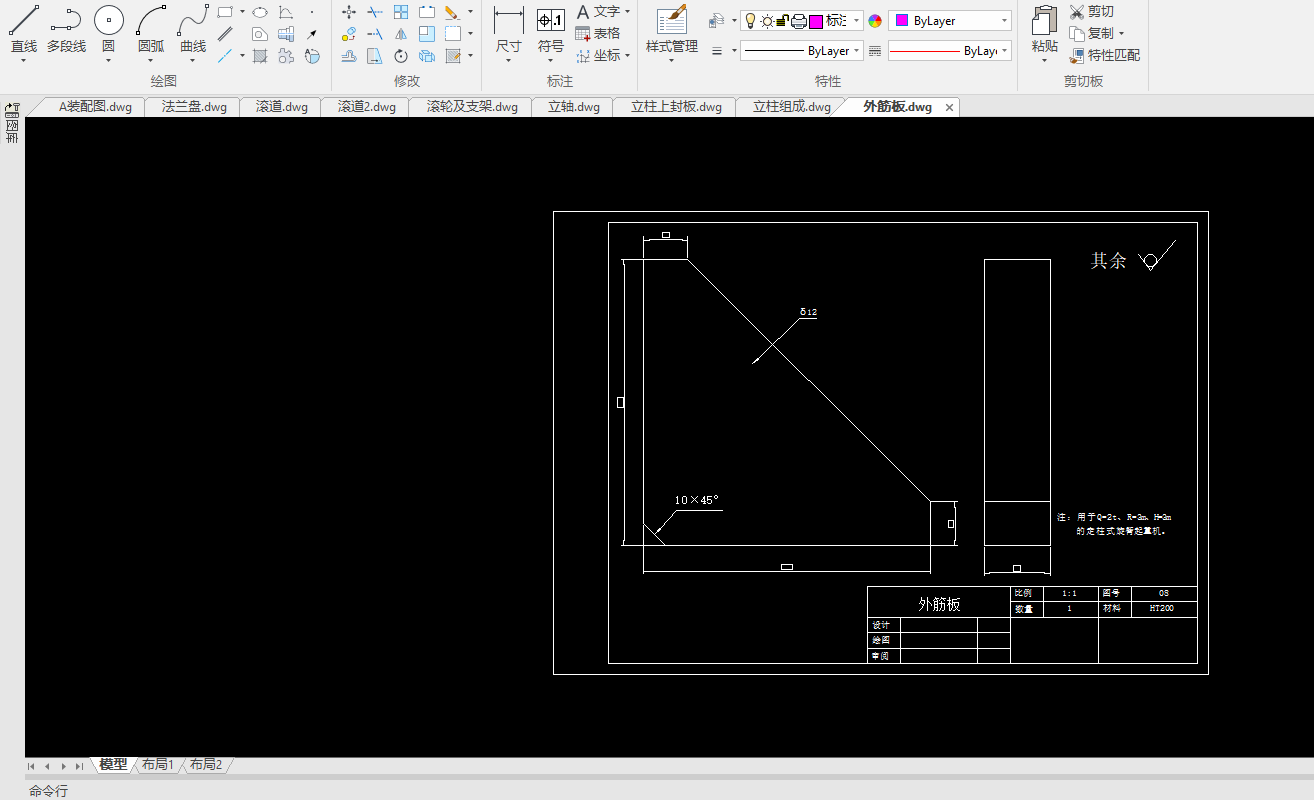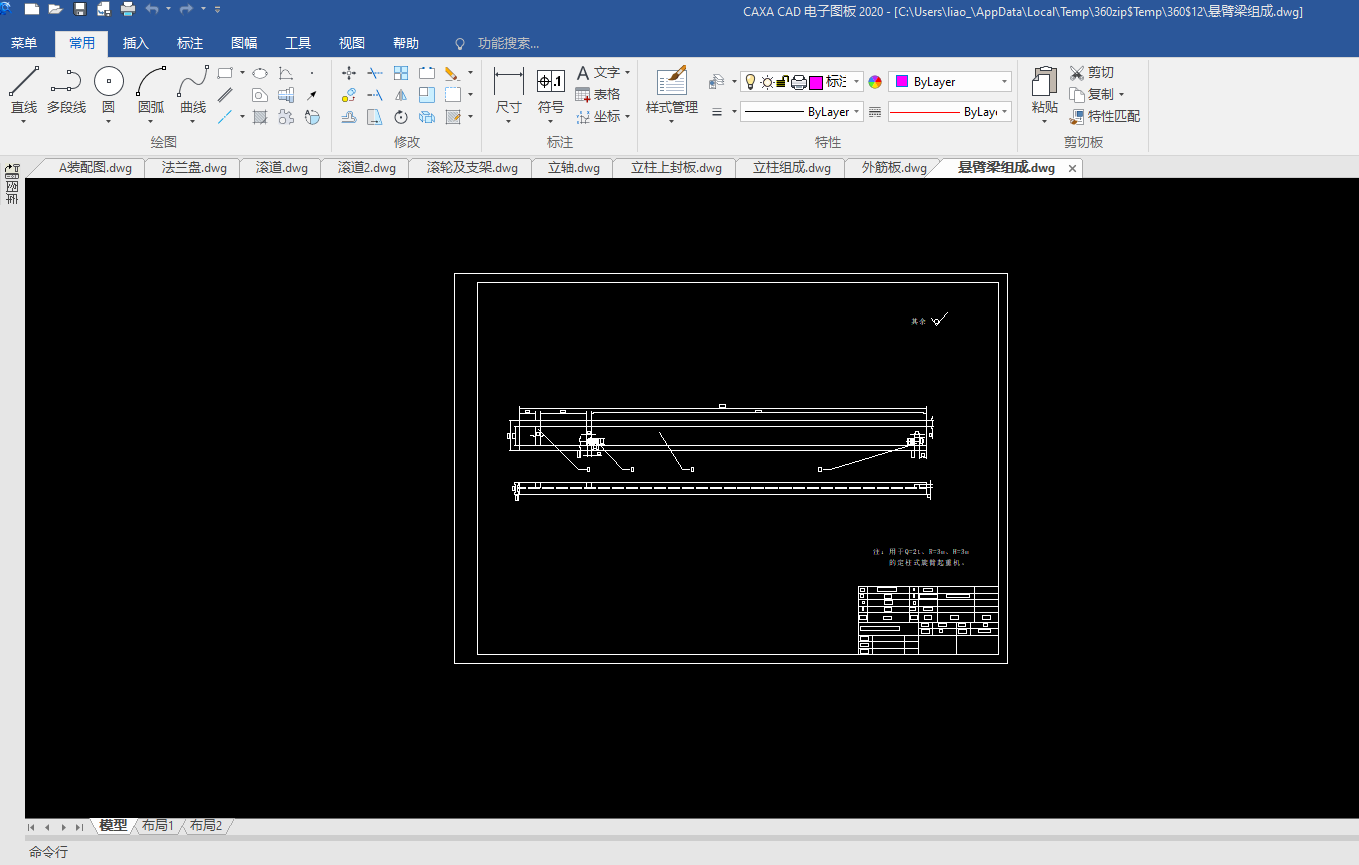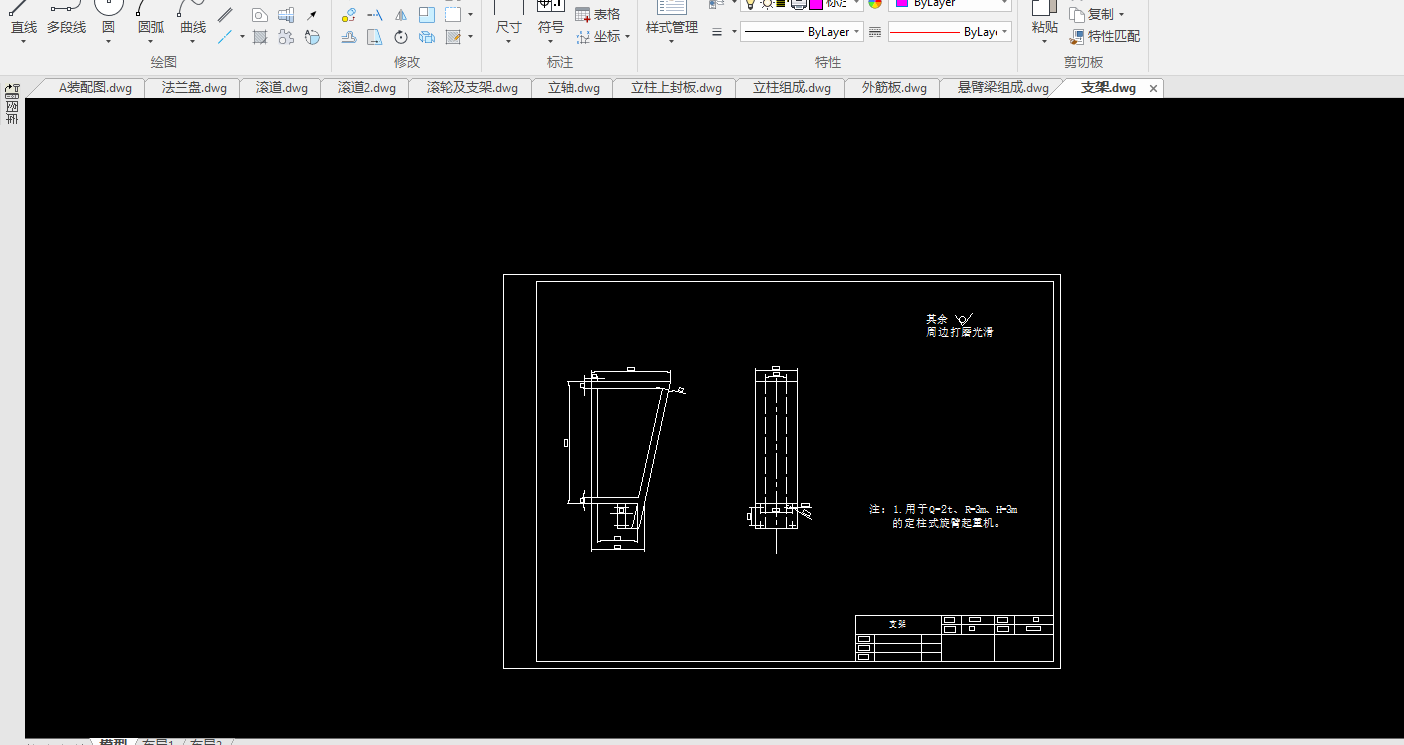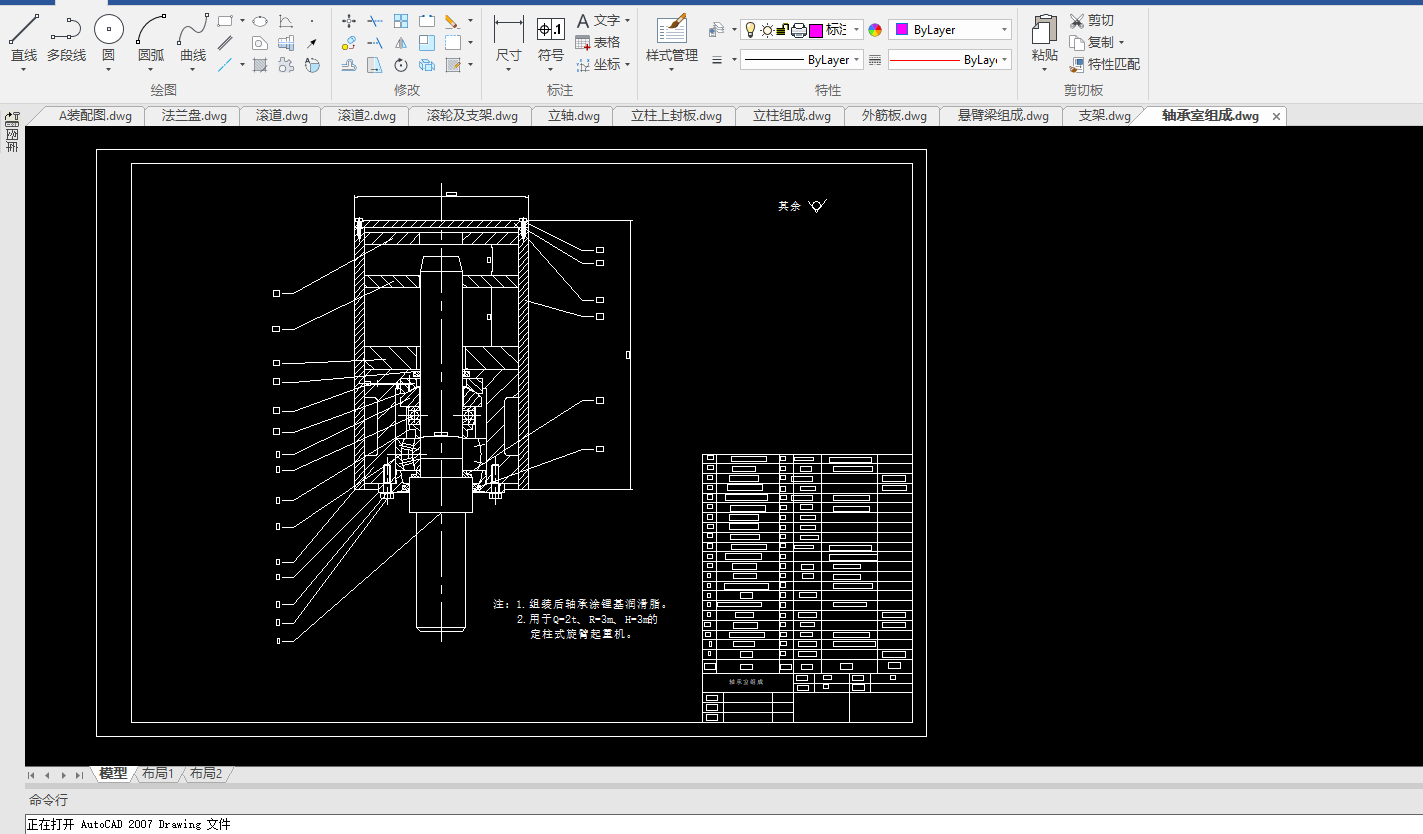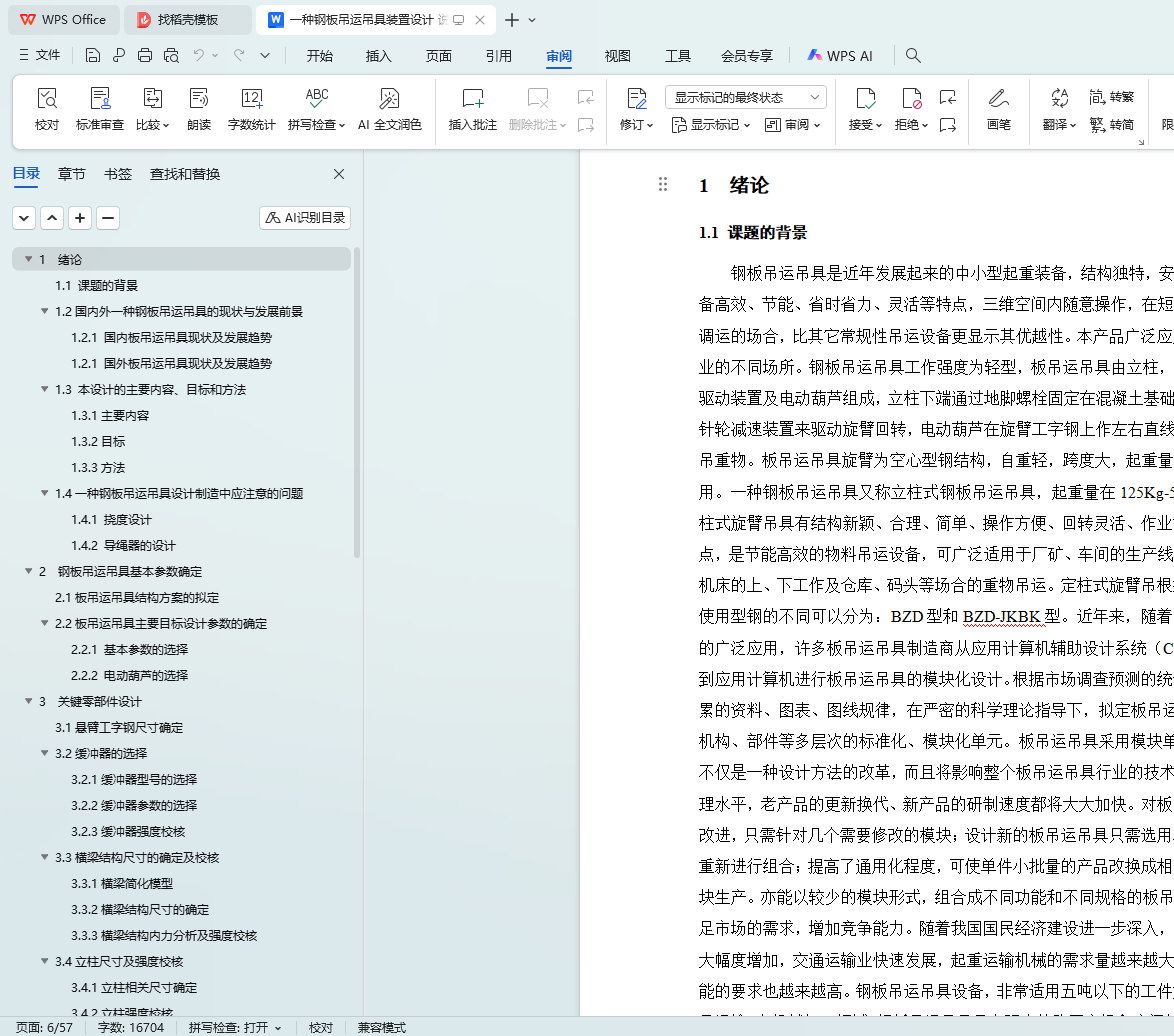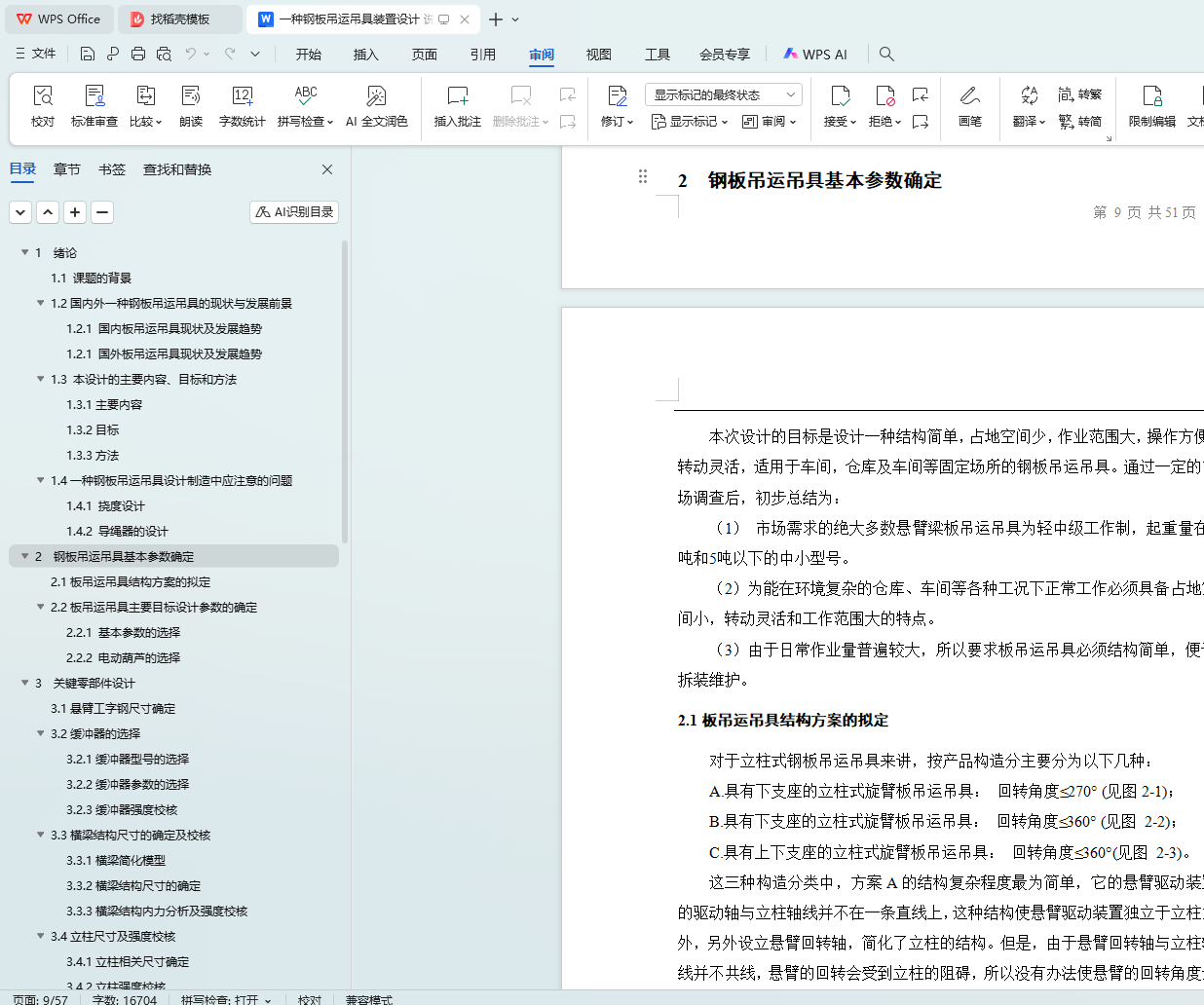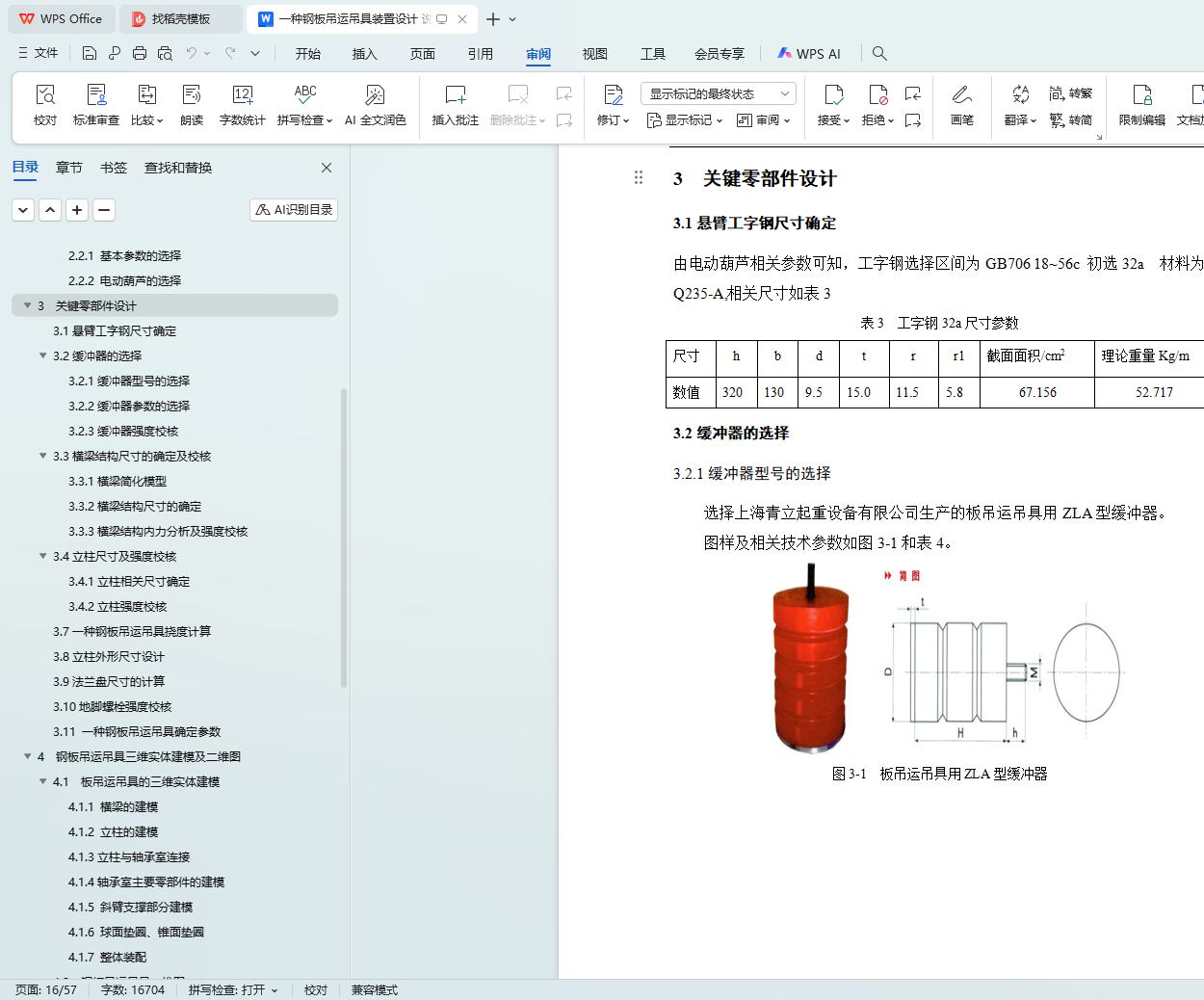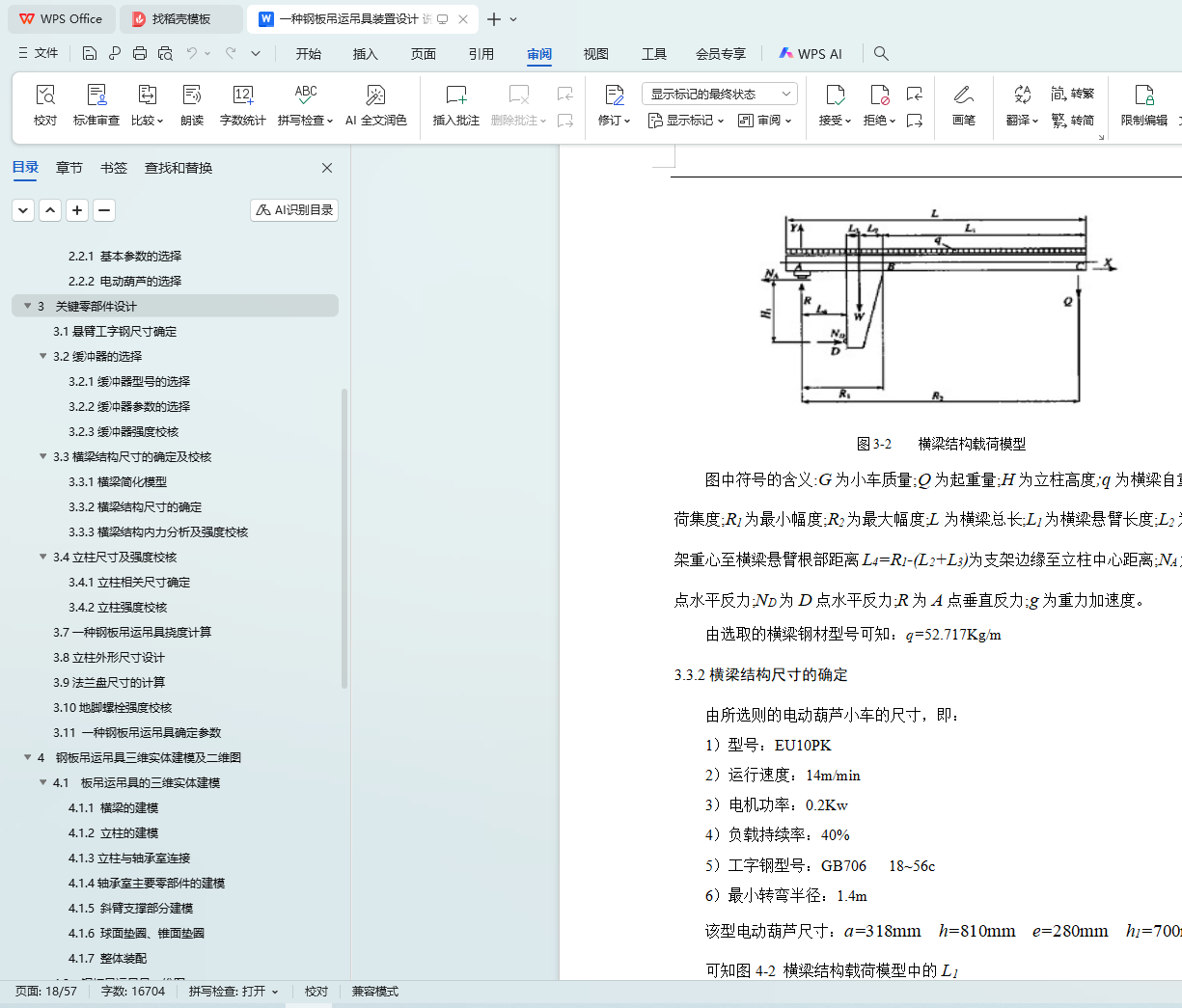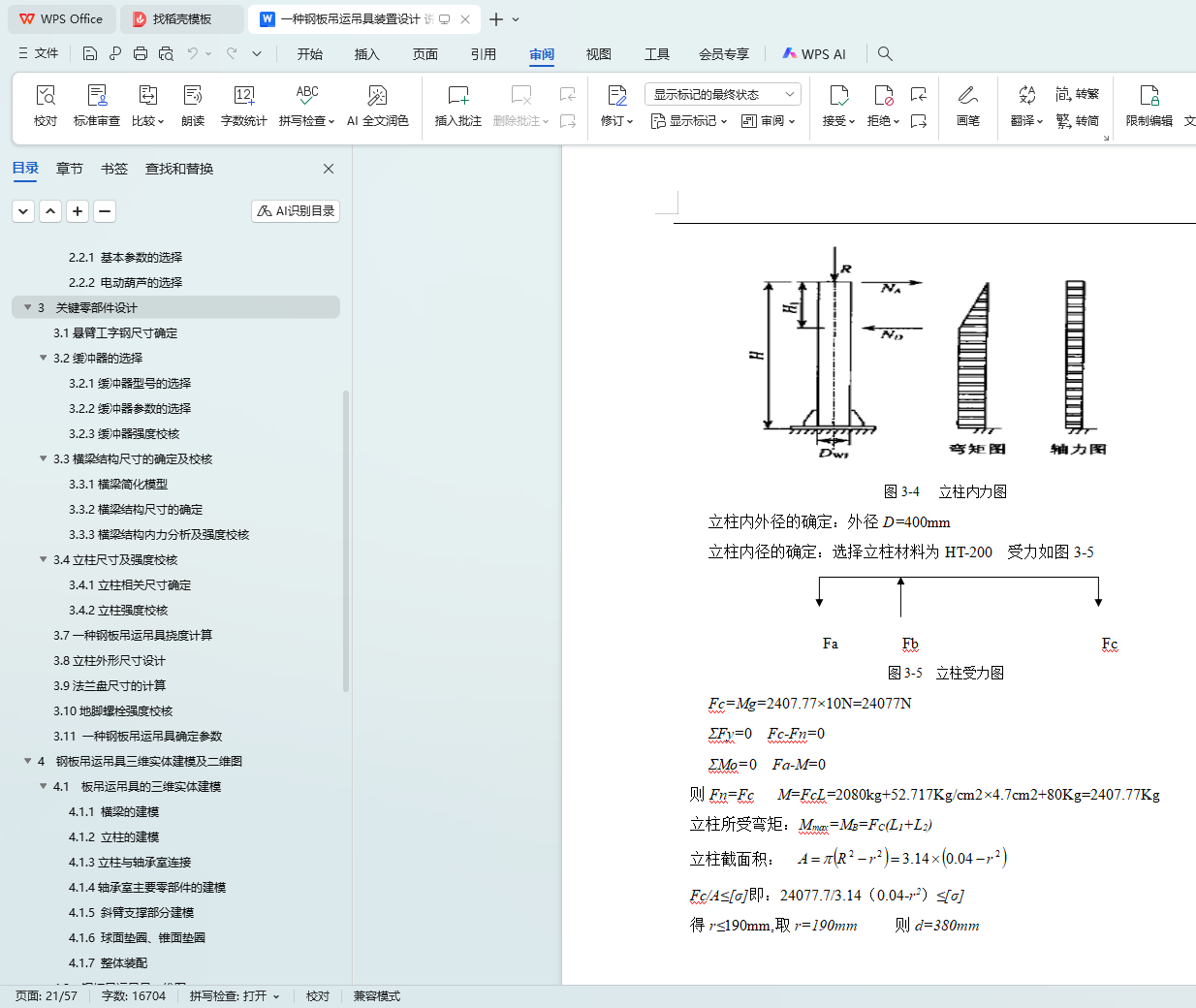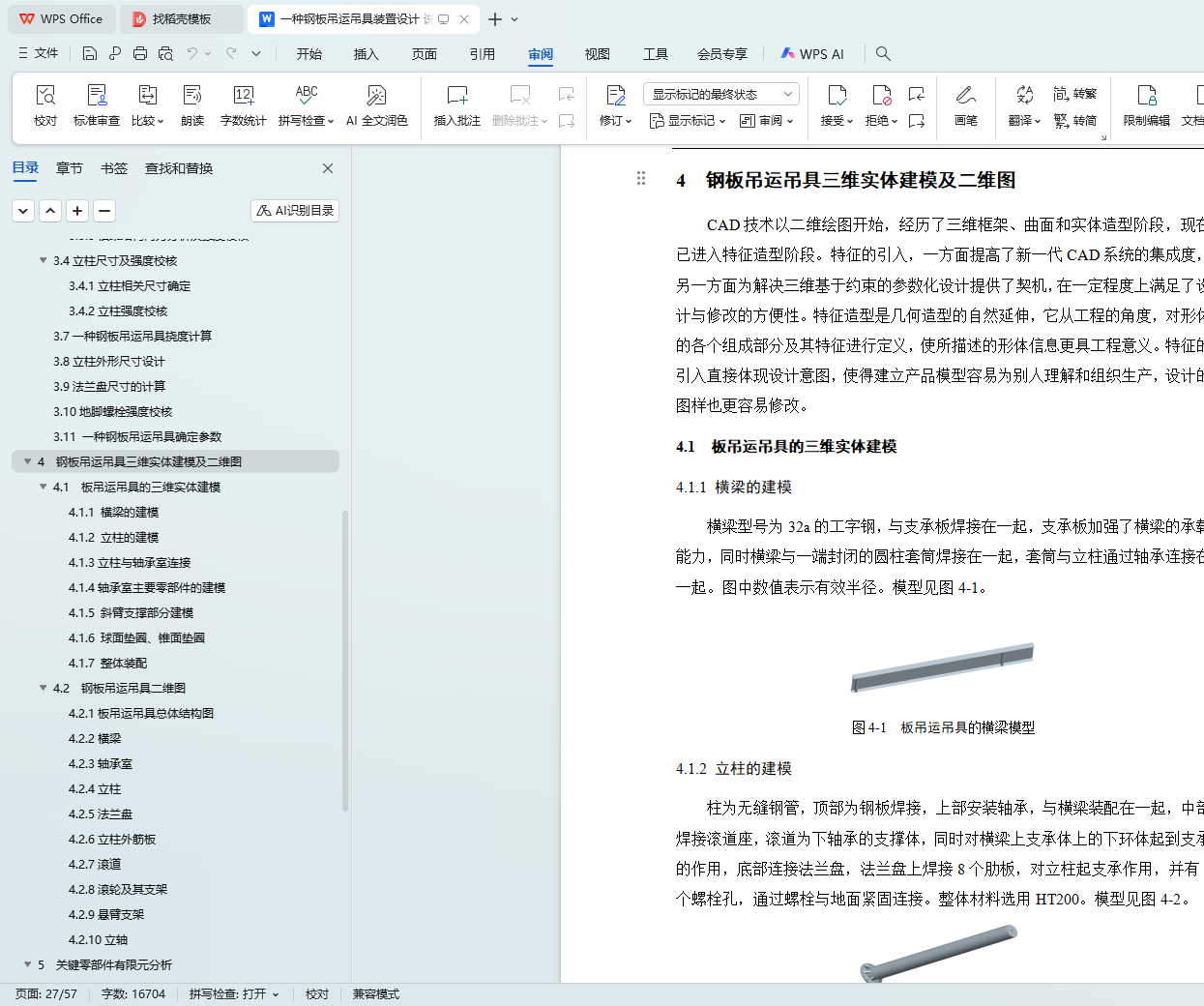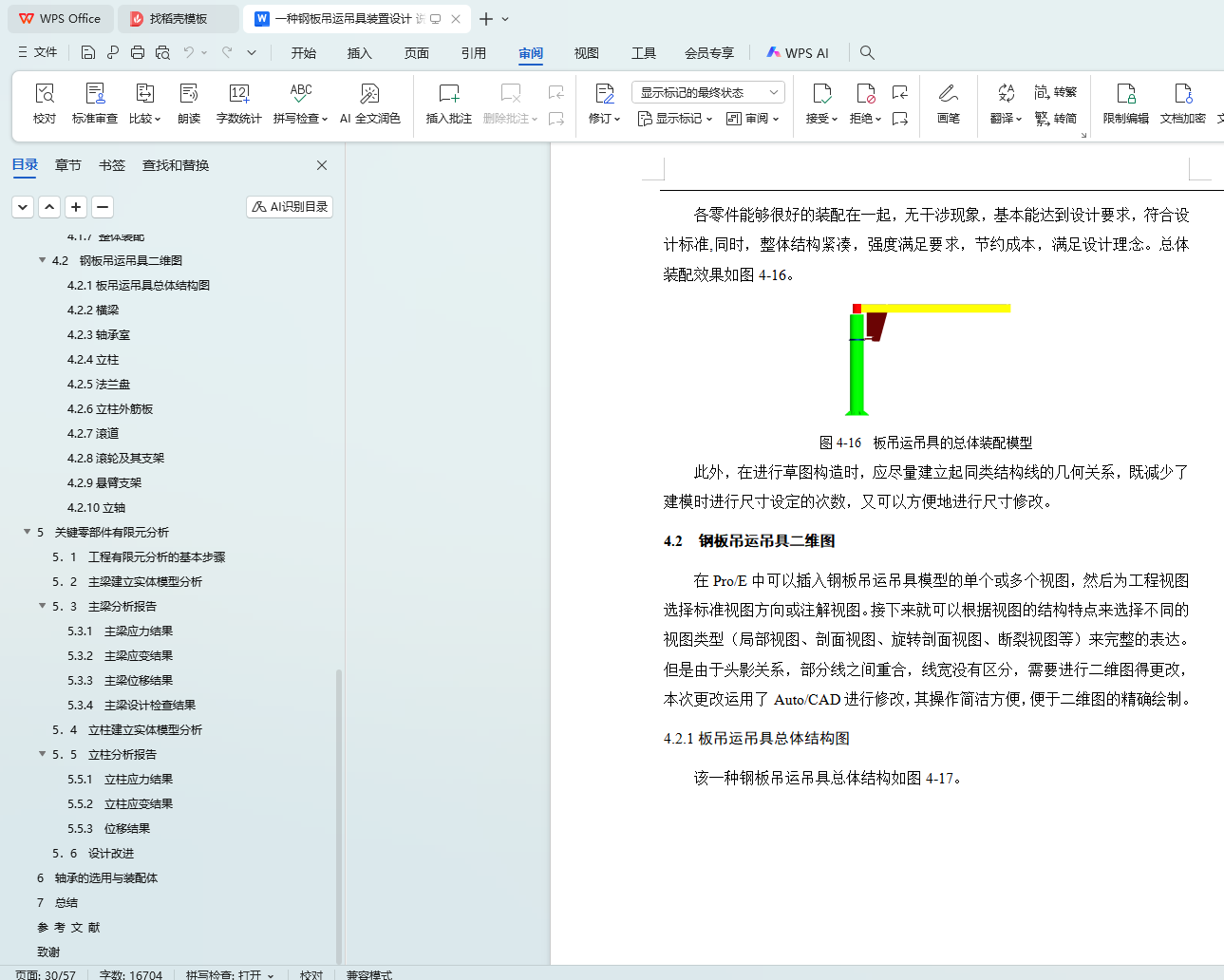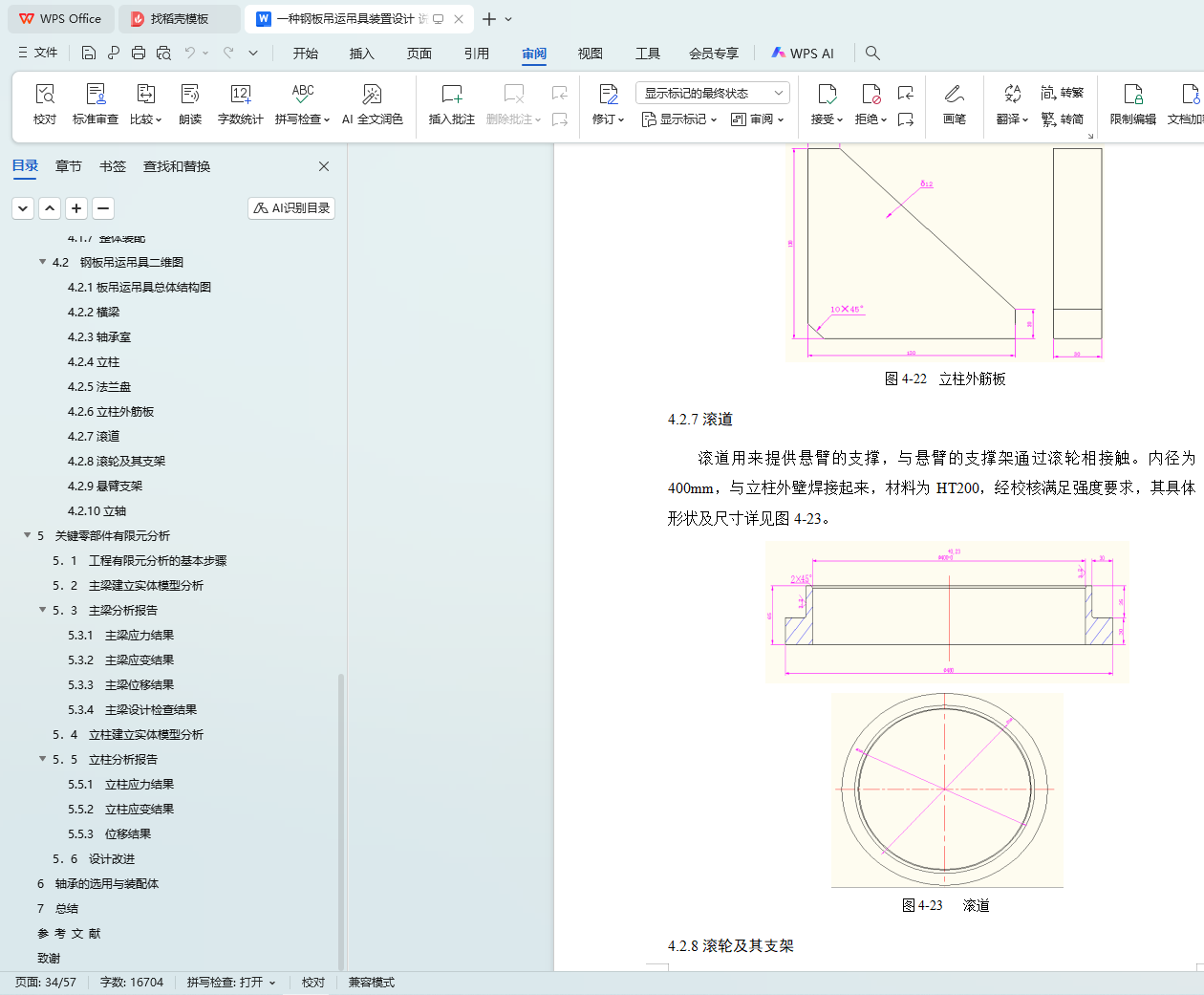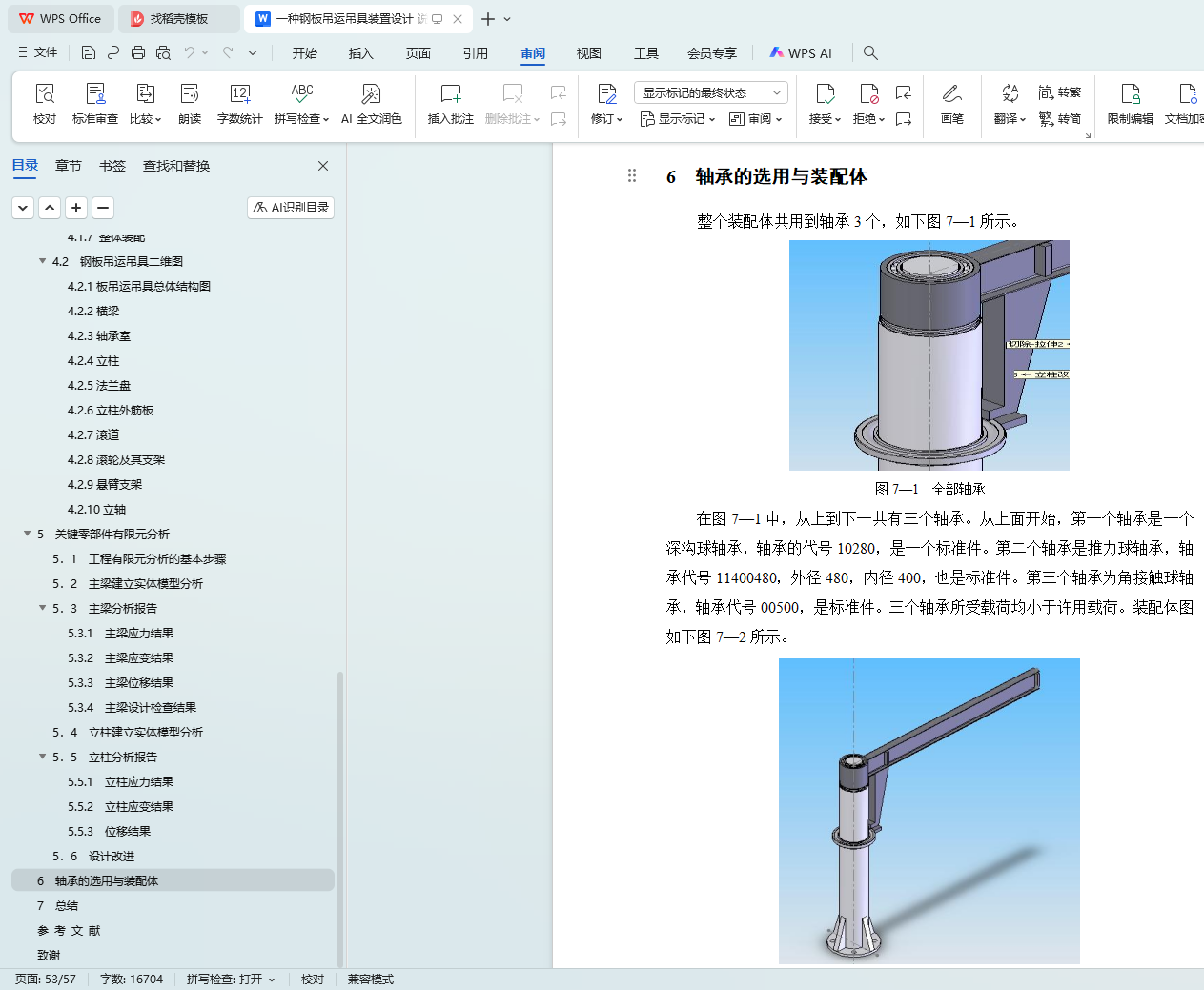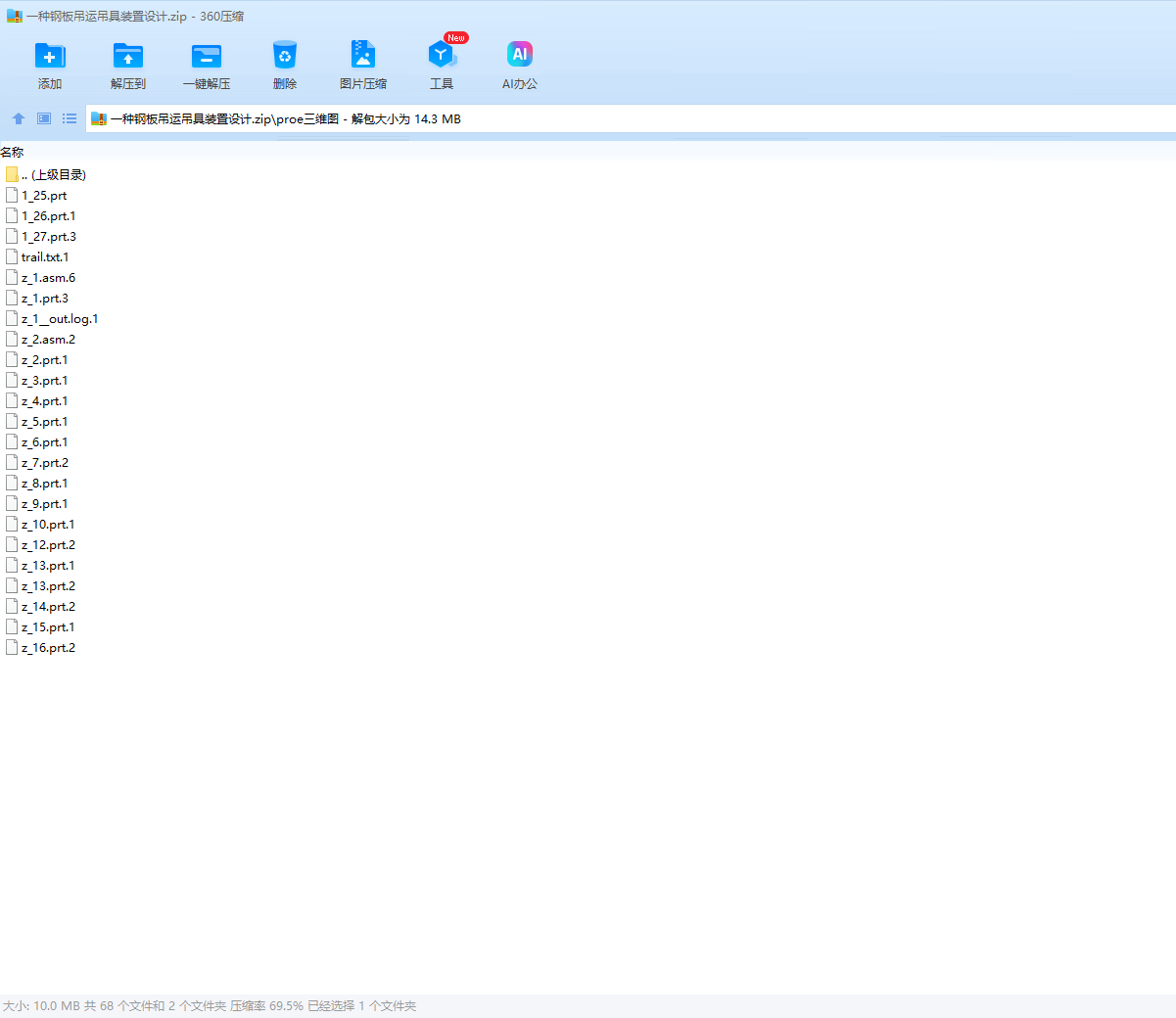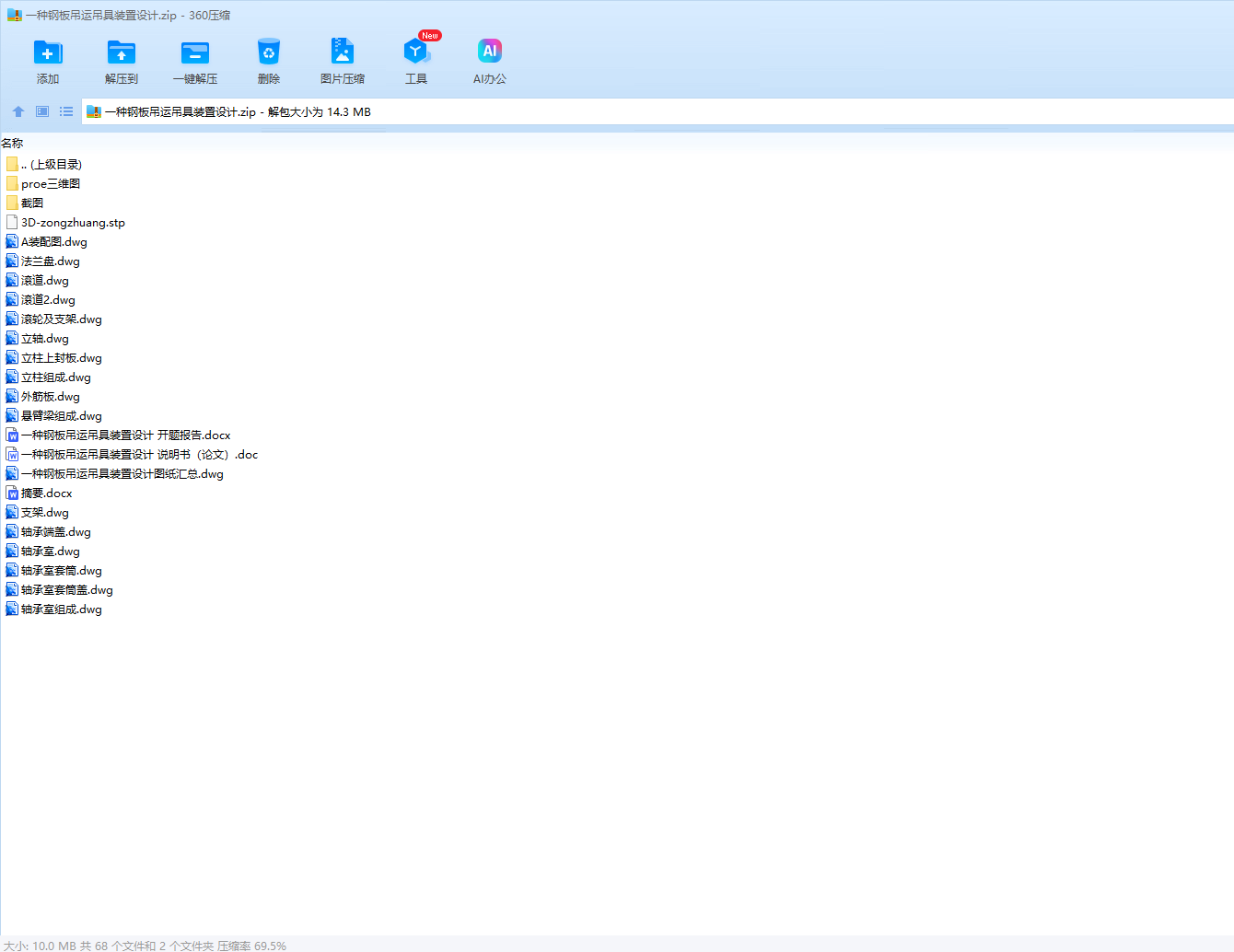一种钢板吊运吊具装置设计
摘要
本文设计了一种钢板吊运吊具装置,该装置主要由立柱、回转臂、悬臂驱动装置和电动葫芦等关键部件组成。装置通过地脚螺栓将立柱下端底座固定在混凝土基础上,利用电机驱动减速机实现悬臂的回转功能,而电动葫芦则在悬臂的工字钢轨道上往返运行,以完成钢板的吊运作业。本设计的吊具装置具有自重轻、悬臂长、起重量大、安装简便、操作灵活以及维修容易等优点,且各部件完全独立,适合作为工作岗位上的理想吊运工具,广泛应用于室外货场和装卸平台。通过优化设计,装置在占地面积小的情况下,即便在起升净空受限的环境中,也能实现最大的起升高度。论文详细阐述了吊具装置的整体设计方案,并对2t起重量吊具的悬臂、立柱等关键机构部件进行了详细设计计算,包括主要零部件如螺栓、开式齿轮等的选择,悬臂结构的优化设计,以及轴承、焊缝强度、转动轴键等力学性能参数的校核。此外,还通过三维实体建模和有限元分析,对关键零部件进行了详细的力学性能评估,确保了设计的合理性和可靠性。
关键词: 定柱式吊具;钢板吊运;电机驱动;悬臂设计;立柱强度分析
Abstract
In this paper, a steel plate lifting tool device is designed, which is mainly composed of column, rotary arm, cantilever drive device and electric hoist. The device fixed the base of the lower end of the column on the concrete foundation through the anchor bolt, and uses the motor to realize the rotation function of the cantilever, while the electric hoist runs back and forth on the I-steel track of the cantilever to complete the lifting operation of the steel plate. The designed lifting device has the advantages of light weight, long cantilever, large lifting weight, simple installation, flexible operation and easy maintenance, and each part is completely independent, suitable for the ideal lifting tool at work, widely used in outdoor cargo yard and loading and unloading platform. With the optimized design, the device can achieve the maximum lifting height even in a restricted lifting clearance environment with a small footprint. The paper expounds the overall design scheme of the crane device, and the detailed design of the cantilever and columns of the key components, including the main components such as bolts, open gear, the optimization of the cantilever structure, and the strength of the bearing, the rotating shaft key, and other mechanical performance parameters of check. In addition, the detailed mechanical properties of the key components are evaluated through 3 D solid modeling and finite element analysis, which ensures the rationality and reliability of the design.
Key words: fixed column hanger; steel plate lifting; motor drive; cantilever design; column strength analysis
目录
1 绪论
1.1 课题的背景
1.2国内外一种钢板吊运吊具的现状与发展前景
1.2.1 国内板吊运吊具现状及发展趋势
1.2.1 国外板吊运吊具现状及发展趋势
1.3 本设计的主要内容、目标和方法
1.3.1主要内容
1.3.2目标
1.3.3方法
1.4一种钢板吊运吊具设计制造中应注意的问题
1.4.1 挠度设计
1.4.2 导绳器的设计
2 钢板吊运吊具基本参数确定
2.1板吊运吊具结构方案的拟定
2.2板吊运吊具主要目标设计参数的确定
2.2.1 基本参数的选择
2.2.2 电动葫芦的选择
3 关键零部件设计
3.1悬臂工字钢尺寸确定
3.2缓冲器的选择
3.2.1缓冲器型号的选择
3.2.2缓冲器参数的选择
3.2.3缓冲器强度校核
3.3横梁结构尺寸的确定及校核
3.3.1横梁简化模型
3.3.2横梁结构尺寸的确定
3.3.3横梁结构内力分析及强度校核
3.4立柱尺寸及强度校核
3.4.1立柱相关尺寸确定
3.4.2立柱强度校核
3.7一种钢板吊运吊具挠度计算
3.8立柱外形尺寸设计
3.9法兰盘尺寸的计算
3.10地脚螺栓强度校核
3.11 一种钢板吊运吊具确定参数
4 钢板吊运吊具三维实体建模及二维图
4.1 板吊运吊具的三维实体建模
4.1.1 横梁的建模
4.1.2 立柱的建模
4.1.3立柱与轴承室连接
4.1.4轴承室主要零部件的建模
4.1.5 斜臂支撑部分建模
4.1.6 球面垫圈、锥面垫圈
4.1.7 整体装配
4.2 钢板吊运吊具二维图
4.2.1板吊运吊具总体结构图
4.2.2横梁
4.2.3轴承室
4.2.4立柱
4.2.5法兰盘
4.2.6立柱外筋板
4.2.7滚道
4.2.8滚轮及其支架
4.2.9悬臂支架
4.2.10立轴
5 关键零部件有限元分析
5.1 工程有限元分析的基本步骤
5.2 主梁建立实体模型分析
5.3 主梁分析报告
5.3.1 主梁应力结果
5.3.2 主梁应变结果
5.3.3 主梁位移结果
5.3.4 主梁设计检查结果
5.4 立柱建立实体模型分析
5.5 立柱分析报告
5.5.1 立柱应力结果
5.5.2 立柱应变结果
5.5.3 位移结果
5.6 设计改进
6 轴承的选用与装配体
7 总结
参 考 文 献
致谢
